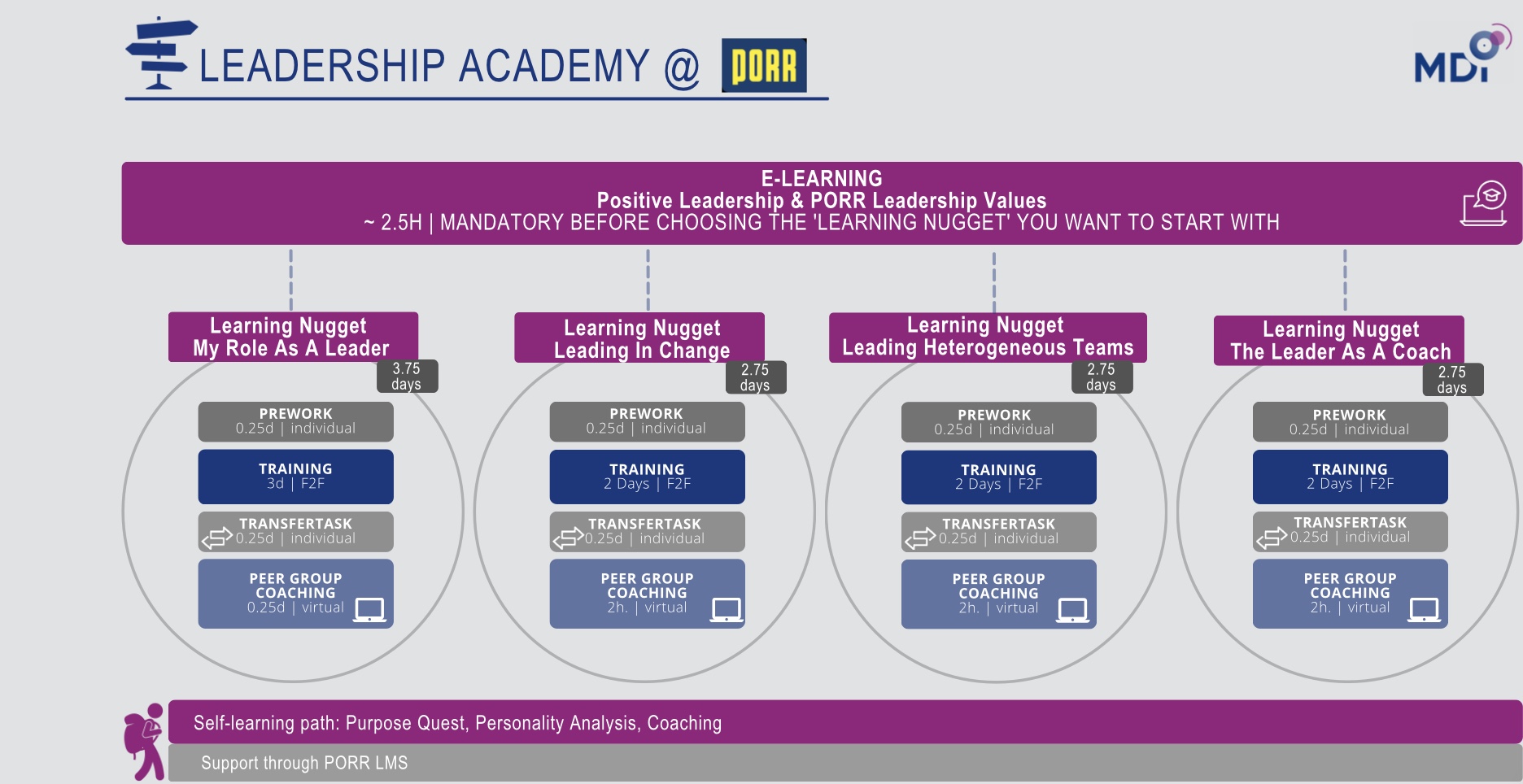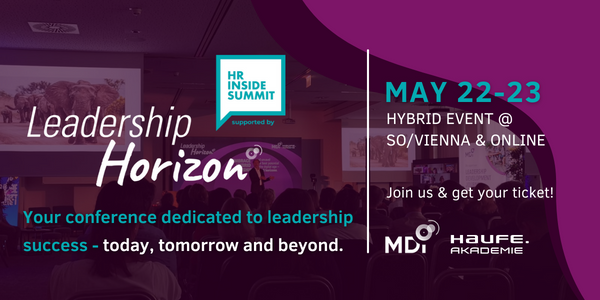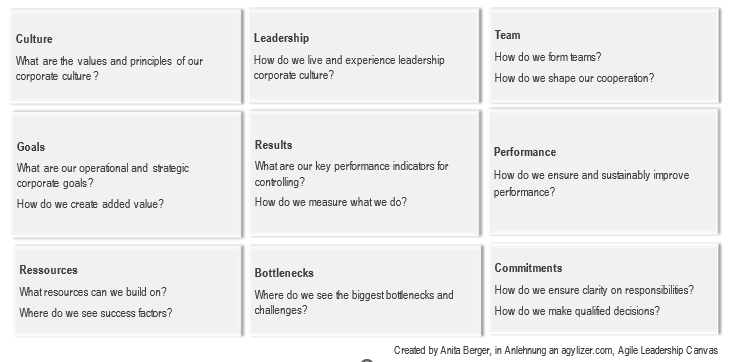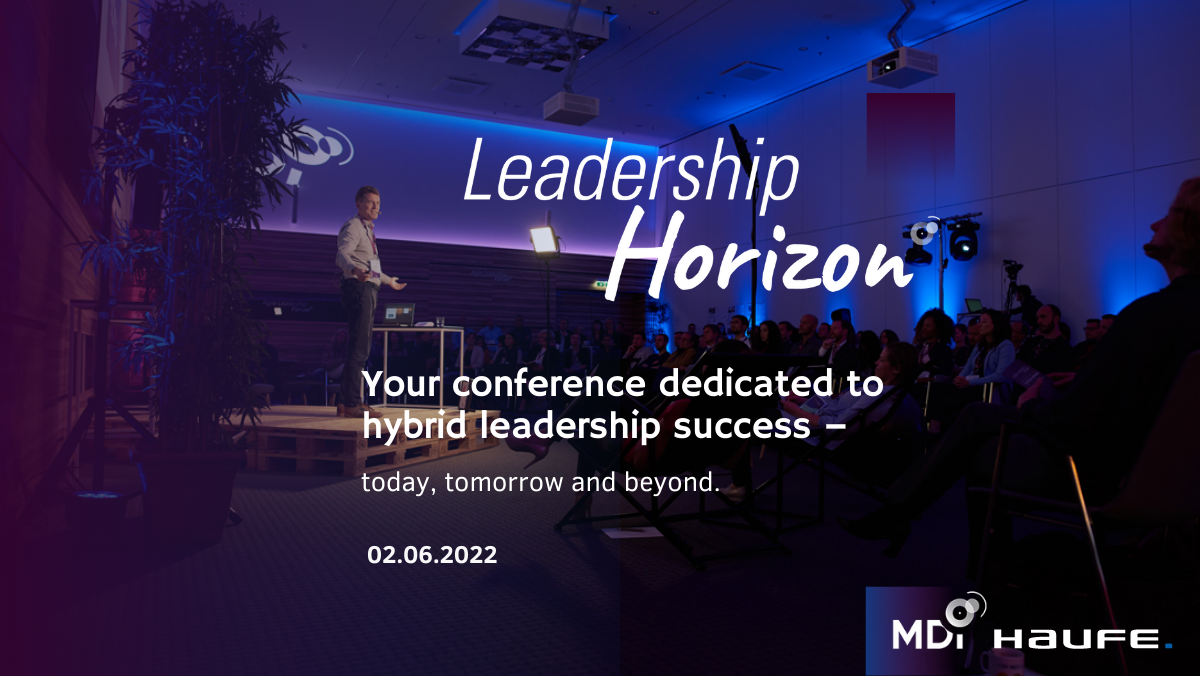
High-Impact through Blended and Flexible Learning
High-Impact through Blended and Flexible Learning
Over the last few years, we at MDI have been working with more and more tools to strengthen high-impact with our clients. In this blog post, we’ll introduce you to two of these tools: Blended Learning, which we use at Boehringer Ingelheim and Mondi, and the Flexible Learning Nugget Journey for PORR.
You can find more details about these customer stories as well as High-Impact here in our MDI whitepaper.
Blended Learning with Boehringer Ingelheim
Blended learning is a mixture of face-to-face and online training in combination with a complementary use of virtual learning opportunities, such as e-learning. It thus goes beyond the standard model of training & offers learners the opportunity to learn in a self-directed way.
The Lateral Leadership Program
We have been using blended learning for years with great success in the Lateral Leadership Program for our client Boehringer Ingelheim RCV. This is a 3-module training, which is accompanied by the learning transfer platform Promote.
Not only the learners themselves, but also their leaders and trainers, are invited to the platform five weeks before the start of the first module. Through Promote, learners receive all the important information about the program and are encouraged to watch self-study videos, complete quizzes, and schedule a meeting with their leaders to define the expected outcome of the training.
To ensure timely completion, regular reminders for deadlines are sent through Promote.
When is a Blended Learning Journey worthwhile?
Setting up a Blended Learning Journey initially requires more time than setting up a purely face-to-face or online training. However, if during the project initiation – that is when creating the High Impact Canvas – it becomes clear that
- the initiative extends over a longer period,
- there are recurring elements, meaning it should take place multiple times, or
- the initiative strongly contributes to the company’s goals,
then a Blended Learning approach is very likely worthwhile.

Blended Learning with Mondi: Utilize existing tools
Before embarking on a platform search, take a moment to consider or consult with your IT department to determine if an existing tool can be repurposed to support Blended Learning access. As an example, I would like to mention Articulate RISE.
At MDI, we use this tool for e-learning and creating digital client offerings since 2019. For the redesign of the 3-module First-Line Manager Program for Mondi AG, we use RISE as a user-friendly (light) e-learning tool.
The e-learning includes two to three different input videos per module on the learning content, followed by reflection questions. Through this tool, you can integrate expectation and feedback surveys, as well as share documents and relevant training information.
Here’s how Blended Learning ranks in our High-Impact ranking:

Planned Learning Journey vs. Flexible Learning Nugget Journey with PORR
Today’s learners demand flexible and personalized solutions for their professional development. As L&D professionals, we are tasked with developing suitable solution models for our target groups that reflect both the strategic security needs of companies and the desire for individuality and flexibility.
But what defines a personalized learning concept with a program structure?
The concept developed with PORR is a leadership development program consisting of individual, self-contained learning nuggets that cater to different needs within PORR and can be individually booked by the learners.

Learners can choose from a continuously expanding pool of learning nuggets, which are regularly updated with current content. Learners are free to choose the number of learning nuggets, which consists of individual tasks, face-to-face sessions, and virtual sessions.
As a result, learner initiative and commitment to the content take center stage. Depending on individual interests, needs, and availability, learners have the opportunity to access a variety of educational opportunities without being tied to a rigid system.
This means they can focus their time and energy on the topics that are most relevant to them, ultimately leading to a more efficient and effective learning journey.
Here’s how the Flexible Learning Nugget Journey ranks in our High-Impact ranking:

Conclusion
Overall, both Blended Learning and the Flexible Learning Nugget Journey are practical tools that enhance high-impact in companies. Blended Learning promotes the joy of learning, offers learners a high degree of self-responsibility, and allows them to control the learning process.
The Flexible Learning Nugget Journey, on the other hand, enables learners to tailor their learning to their specific requirements, interests, and learning styles due to its high flexibility.

Melanie Holzner
Junior L&D Consultant
Since 2021, Melanie has been supporting executives and companies internationally in the implementation of their leadership training programs as a project manager at MDI. Since February 2023, she has been developing customized and sustainable training programs for her clients as a Jr. L&D Consultant. She attaches great importance to high quality and is always eager to make a sustainable contribution to leadership development and thus to a better world.
Together with other L&D consultants, Melanie contributed to our MDI whitepaper and shared her experiences with Boehringer Ingelheim and Mondi.

Iris Burner
Learning & Development Consultant
Since 2022, Iris has been an L&D Consultant at MDI, supporting leaders and organisations worldwide in personal development and creating tailored training programs. She values the personal learning experience and ensures clients benefit from valuable insights. With a background in adult education and professional experience in a renowned corporation, Iris has a comprehensive understanding of company needs and develops customized solutions for sustainable development and growth.
Together with other L&D consultants, Iris contributed to our MDI whitepaper and shared her experiences with PORR.




















